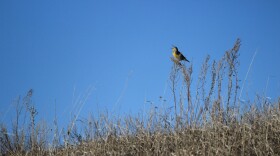Summer is a good time to do a little star gazing, and we are heading toward a new moon on the 29th, so if the skies are clear, stargazing should be quite good for the next couple weeks.
There are lots of constellations to see of course, but Scorpius (the scorpion) is one of the more conspicuous ones. It can be seen in the southern sky around dusk and will slowly move across the southern horizon until dropping out of sight in the southwest around 3am CT.
Scorpius is shaped like a fishhook with the eye of the fishhook at the upper right, then trending down and toward the left toward the hook which faces upward. To visualize the scorpion, start with the heart which is the star Antares. It is the sixteenth brightest star in the sky. Once you find Antares, you can visualize the scorpion facing the west. The head is to the upper right of Antares and consists of three nearly vertically arranged stars. To the lower left of Antares is the rest of the body, ending with the tail which coils back up on top of the body.
There are several stories in Greek Mythology about Orion, one of which has Orion being killed by a scorpion. Orion boasted that he could kill all the animals on the earth. Gaea, the Goddess of Earth then sent a scorpion after Orion to protect the animals in case Orion ever tried to kill the animals. A battle eventually commenced, with the scorpion killing Orion. Orion and Scorpius are now placed in the heavens on opposite sides of the sky to prevent any possibility of a rematch.
Once you find Scorpius you should be able to find Sagittarius (the archer) which follows Scorpius across the night sky. Sagittarius is imagined as a centaur facing westward, or to the right, with his bow drawn on Scorpius. You will notice that the arrow is pointing right at Antares which you may recall represents the scorpion’s heart.
The night sky is full of things to see. So, take the time this summer to do some star gazing. There are abundant resources available to help you with navigating the night sky, such as your local library, bookstores, as well as the internet. Then find a dark place on a warm clear night, lay back, and take in the celestial show.




